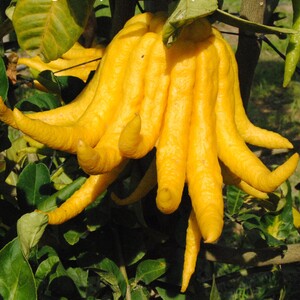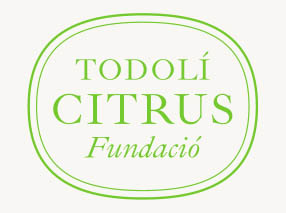Citrons
Digitata – Buddha’s Hand
Citrus medica L.
TCF-274
VARIETAL GROUP
ORIGIN
AVAILABILITY
Citrons
Asia
October – May

ORIGIN DATA:
The Buddha’s Hand Citron is characterized by the unique shape of its fruit, formed by five or more segments that resemble the fingers of a hand. This name appears in a botanical book written during the Jin Dynasty in China (266-420). It is a variety cultivated for hundreds of years in Asia. Another of its characteristics is the total absence of pulp.
TREE AND FRUIT DESCRIPTION:
The tree is vigorous but slow-growing, with a rounded shape and a tendency to open branches. The young flowers are purple and aromatic, being a re-flowering variety. The leaves are large, aromatic, dark green in color and shiny. The fruits are formed only by a thin and smooth rind, extremely fragrant, with a strong but pleasant aroma. The albedo is edible, thick, white and pleasant to the mouth. It lacks pulp.
USES:
Given the strong aroma of its rind, the fruit has traditionally been used as a decorative element, mosquito repellent or air freshener for closets or rooms. Its albedo is consumed as a dessert, in savory dishes (salads, creams, purees…) or in combination with alcoholic beverages. It is candied in slices, which must first be covered with salt for a month to remove the bitter taste; after washing, they are steamed and candied. The resulting sweet is aromatic and tasty. In many parts of Asia, it is considered a sign of good fortune.




